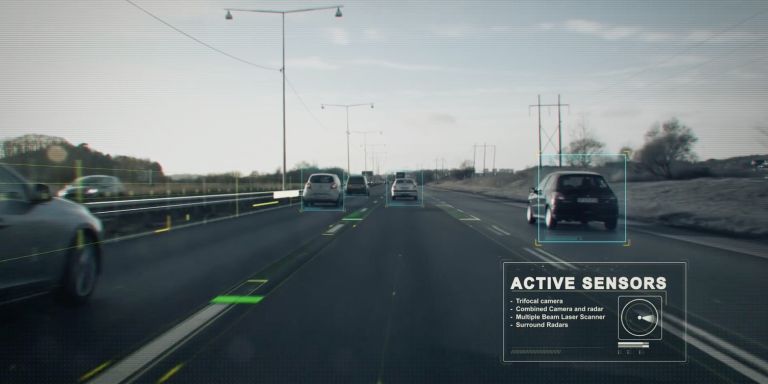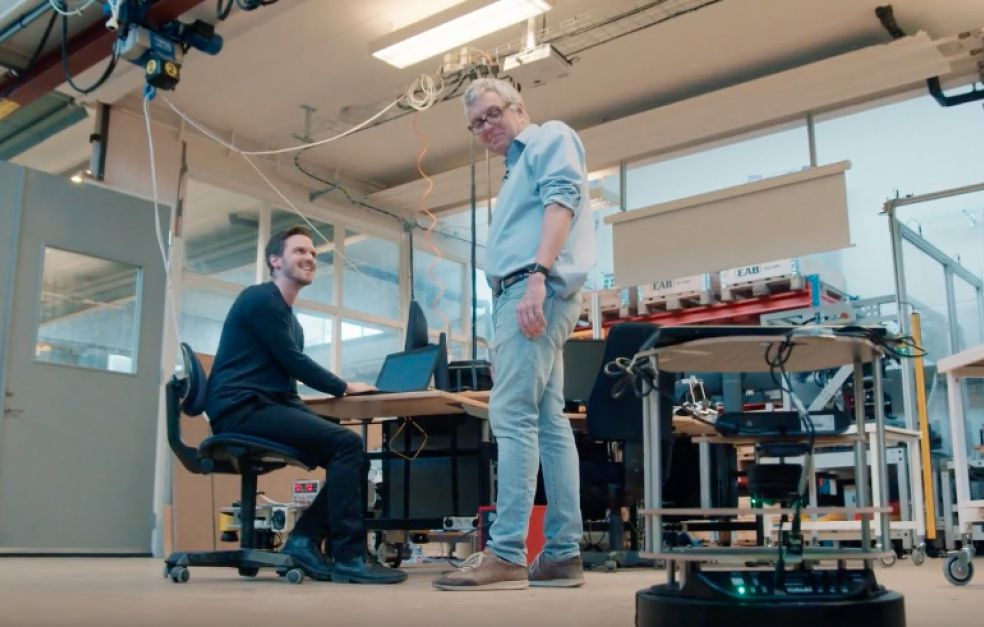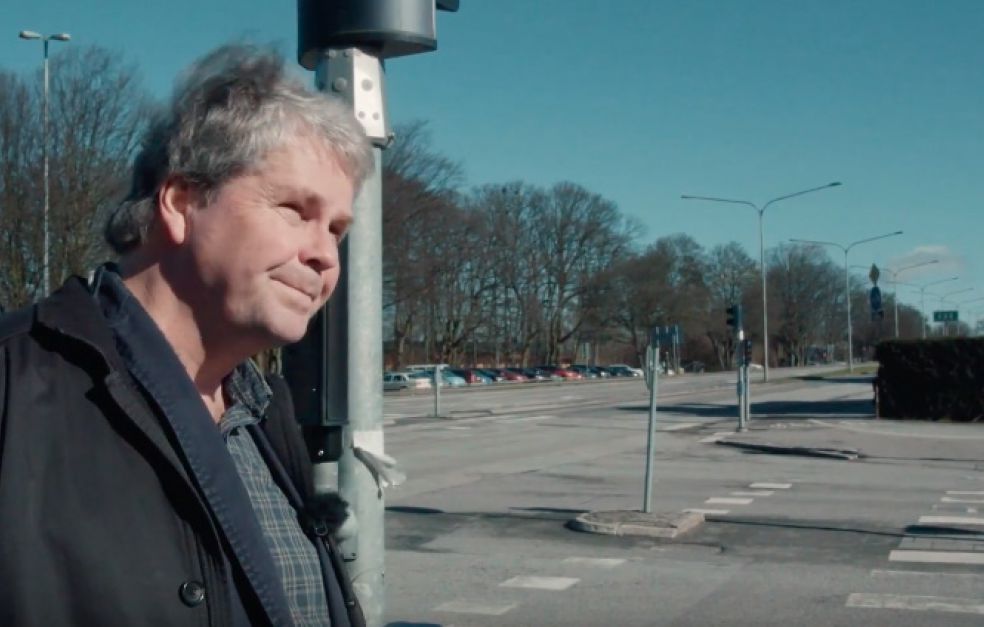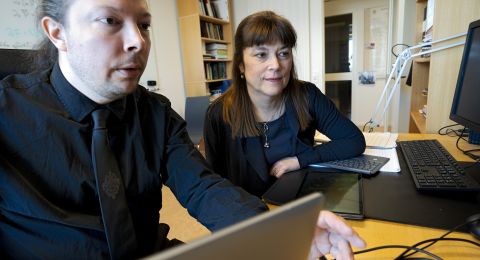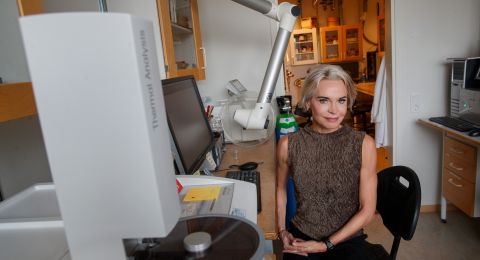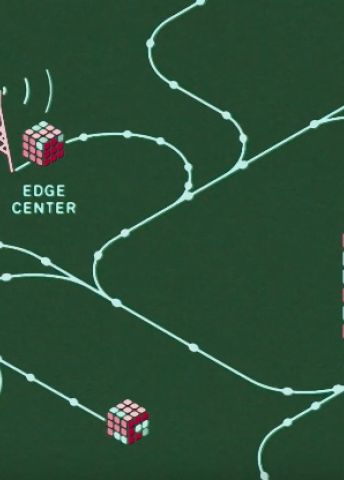
Strategic Initiatives
Wallenberg AI, Autonomous Systems and Software Program, WASP
Host University:
Linköping University
Other participating institutions:
Chalmers University of Technology
KTH Royal Institute of Technology
Lund University
Umeå University
Affiliated groups of excellence at Uppsala University, Örebro University and Luleå University of Technology
Website:
http://wasp-sweden.org
Grant:
SEK 5.1 billion in total during 2015-2031
Together with co-funding from the universities involved and Swedish industrial groups, the entire initiative is worth SEK 6.4 billion.
In the modern age machines of various kinds have made both work and our daily lives easier. Until recently they have always been dependent on people and controlled by them. Simply put, they have been needy and unintelligent. But the development of artificial intelligence (AI) and autonomous systems is changing all this. It began modestly enough with industrial robots. Now self-driving automobiles are being tested in traffic, and air traffic control towers in one place are monitoring air traffic in another. Meanwhile, researchers are training robots and computers to see, and to learn to understand what they see. They are also teaching them to recognize where they are and use that knowledge to navigate and make autonomous decisions.
Smart energy systems, buildings, traffic solutions, cities. Autonomous warehouses, mines, perhaps entire factories. Robots that can be deployed in dangerous places to clean up, search for casualties in collapsed buildings or in inaccessible places following natural disasters. Health care experts also expect that computers will be able to help doctors to make the right diagnosis more quickly, which, in emergency situations may make the difference between life and death.
The visions are many, and what used to seem like fantasy is fast becoming reality. Progress is rapid, even though there are difficulties, and time after time the researchers draw a blank.
“Five years ago, when we tried to teach a computer to recognize various objects from pictures the best results had a 25 percent error rate. This was far from satisfactory, since the average human being has an error rate of five percent. But now the computer wins, with an error rate of only three percent,” says Kalle Åström, Professor of Mathematics at Lund University.
Mimicking the brain
The secret behind the strides that have been made is a new technology called deep learning, which mimics the way neurons in the human brain work.
The technique involves numerous micro-calculations that analyze only their tiny portion of the picture. The result is then sent on to the next algorithm. The process is repeated in multiple tiers. By the end, millions of calculations may have been made.
The method has enabled computers to recognize a cat, for example.
“The computer is shown thousands of pictures of cats and is then left to calibrate the values in the algorithms until maximum accuracy is achieved. This enables it to learn that a cat may be a hairless Sphinx or a scruffy tabby but it is still a cat. Then it is just a question of repeating the process with object after object,” Åström explains.
This is one small part of the research taking place under the Wallenberg AI, Autonomous Systems and Software Program (WASP). The program is an initiative to promote basic research, education and recruitment in the field of autonomous systems and software. The idea is to bring together existing leading competencies in electronics and computer science at different universities.
Collaborating with industry
The research program, which also involves collaboration with Swedish industry, is intended to substantially enhance knowledge and development in a large number of areas where vehicles, robots and complex software-intensive systems use intelligence to achieve autonomy in interaction with people. This is knowledge that is essential if Swedish research and industry are to keep pace as we move towards the Internet of Things, in which an ever-growing number of systems are also autonomous.
“There are expected to be 50 billion connected and interconnected systems. It won’t be possible to run them manually – to work they will have to organize themselves and make their own decisions,” says Lars Nielsen, Professor at Linköping University, who is heading WASP.
A distinctive feature of the program is a graduate school for 150 PhD students, along with the research infrastructure – demonstration platforms that are being established in collaboration with Swedish industrial companies.
“Research impossible elsewhere will be conducted here. We will be having open demonstrations to which everyone is welcome, not least small, innovative enterprises, which also have enormous pulling power when it comes to recruiting international researchers,” Nielsen adds.
Digitization, autonomization and interconnection of systems are taking place on a broad front in Swedish industry and in the global arena. It has been described as a new industrial revolution, sometimes called “Industry 4.0”.
“ WASP lies at the heart of the competence development needed so that Sweden can keep pace with technological and industrial developments,” Nilsson says, drawing a parallel with Facit, a Swedish global player in the office machine sector, which did not survive the market transition to electronic products.
Myriad problems remain
Notwithstanding its collaboration with industry, the focus of the program is on basic research. The lion’s share of the research on self-driving vehicles is taking place at KTH Royal Institute of Technology.
“The research has made great progress in contained environments such as mines, but many remaining problems must be solved before we have self-driving vehicles on the road,” comments Professor Bo Wahlberg of KTH.
Concepts like “cloud computing” and “edge center” are central to autonomous traffic solutions. Many calculations made by vehicles take place in the cloud, but since the current cloud is too slow to synchronize traffic at road junctions, for example, small, local data centers, known as “edge centers”, are needed. These can rapidly perform calculations for each individual vehicle.
The system must decide in a matter of milliseconds the calculations to be performed locally and those to be done at a larger data center farther away.
“We are making mathematical models for this. Then we program a simulation via the computer. Finally, we test things out in our robot lab,” explains Professor Karl-Erik Årzén of Lund University, adding that it will be a long time before traffic solutions of this kind are commonplace.
Text: Carina Dahlberg
Translation: Maxwell Arding
Photo: Magnus Bergström
More about WASP
Strategic areas
• Software
• Systems of systems
• Vehicles, robots and people
Themes
• Data analysis and learning
• Co-operation and interaction
• Model-based systems technology
• Networks and distributed systems
• Software for product development, design and autonomous systems
The projects under the program in brief:
Software Engineering for Smart Systems - studies of data-driven methods for continuously evolving the functionality and performance of smart systems.
Autonomous Clouds and Networks – developing theory and methodologies for increasing the level of autonomy in the data centers and networks of the distributed cloud.
Perception and Learning in Interactive Autonomous Systems – studies ofperception methods based on fusion of multi-modal sensory information in combination with learning for autonomous systems.
Interaction and Communication with Sensor-Rich Autonomous Agents – development ofthe next generation of decision support systems, so called cognitive companions.
Smart Localization Systems – providing scalable, available and reliable smart localization technology needed to enable future intelligent and autonomous systems.
Large Scale Optimization and Control – developing basic theory and methodologies for distributed optimization, learning and decision making in large-scale dynamic systems.
Essential to infrastructure networks for transportation, communications, data, electricity, heat and water, as well as smart cities and health care.
Automated Transport Systems – making transportation of people and goods more efficient, improving both traffic flow and fuel economy, while reducing the number of accidents and dramatically reduce environmental impact
Security for Autonomous Systems – investigation of security and privacy research challenges that arise from advances in autonomous systems
Software Technology for Autonomous Systems – new language techniques and tools for autonomous software
AI and Machine Learning – using AI and Machine Learning in different ways to make autonomous systems smarter and more capable.
